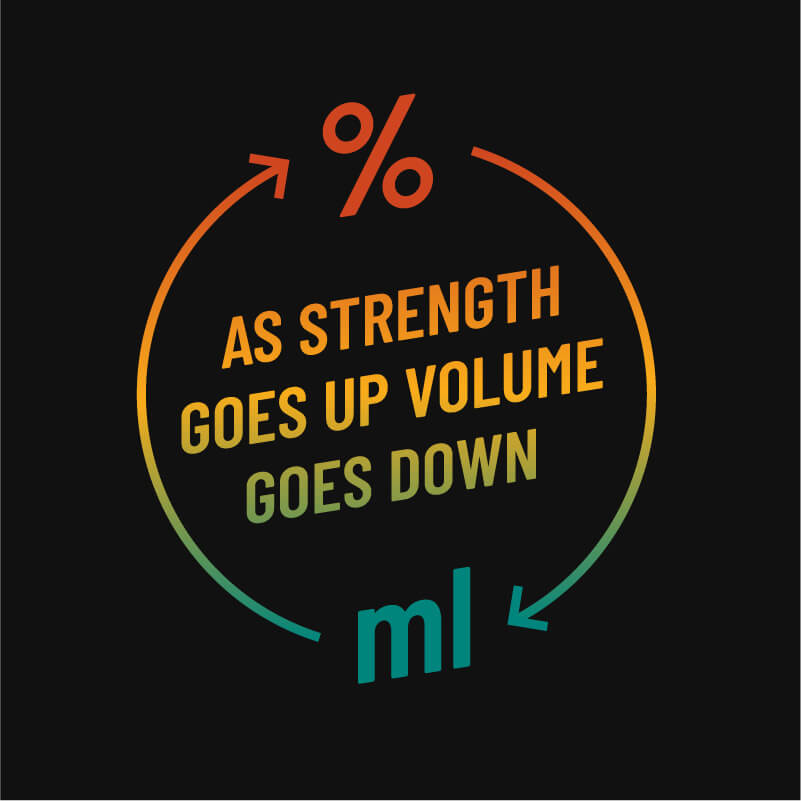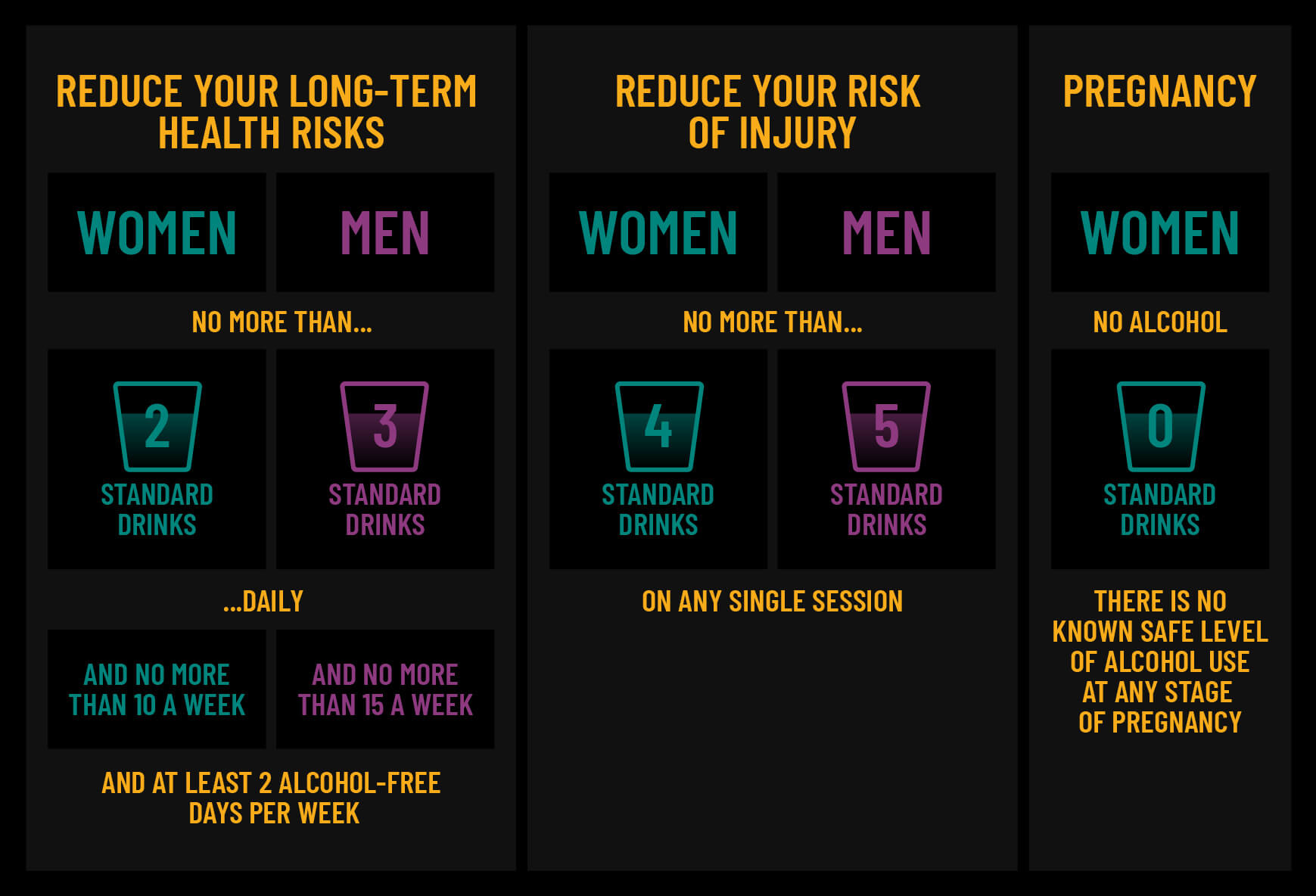Like any important decision in life, you need to know the facts before you can make informed choices about alcohol. So here are 5 key facts we thought you might like to use to help you make smarter drinking choices.
Alcohol is enjoyed by many adults on social occasions and as an accompaniment to meals and celebrations. While most of us can enjoy alcohol in moderation, as part of a balanced diet and an active healthy lifestyle, the decision about when or if you drink is not one to be taken lightly. Yet alcohol doesn’t come with any instructions. As a result, most of us end up referring to our parents, our peers and past experiences which is why there are so many myths and misunderstandings around alcohol. In this article we aim to set the facts straight so you can make the choices that are right for you when it comes to drinking alcohol.

1. What is alcohol?
Alcohol, also known as ethanol, is produced as a result of the fermentation of both sugars and grains (for beer or whiskey), fruits (for wine or cider) and vegetables such as potatoes (for vodka).
Alcohol is considered both as food (as it provides energy) and a drug (as it contains ethanol).
2. How does alcohol affect us?
Alcohol affects each of us in different ways. Our sex, age, size, ethnicity, fitness, body chemistry and intake of food can all impact how the body reacts to alcohol and how we feel the effects.
After swallowing, alcohol is rapidly absorbed from the stomach and intestine into the bloodstream, meaning most of us will feel some effect from the alcohol within 5 – 10 minutes. The alcohol in the blood is then broken down by the liver at a rate of 10gms of pure alcohol – which is the equivalent of 1 standard drink. If you drink more than this, the excess will build up in your body. You can find out more about what’s going on inside when you drink by watching this short video or reading this article.
The more alcohol you drink, the greater the risk to your health and wellbeing. Immediate effects of excess alcohol can include; reduced concentration, blurred vision, slurred speech and headaches as well as nausea and vomiting. Excessive alcohol consumption over time can affect your skin, liver, heart and brain as well as impacting personal relationships, work capabilities and sleep quality, which in turn effects your overall health and quality of life.
To understand more about the health effects of alcohol check out our “My Body” module here and make sure you consult your health professional if you have specific questions or concerns you want answered.

3. What is a standard drink?
A standard drink is a drink that contains 10gms of alcohol (equivalent to 12.5mL of alcohol). This is how much the average adult liver can process in one hour and is therefore the measure of alcohol most commonly used to help guide ‘safe’ drinking levels.
The size of a standard drink varies according to the type of alcoholic beverage you choose and its ABV (Alcohol by Volume) or strength. For example, a standard drink of 5% beer is 255ml compared to a standard drink of mid-strength beer which is 507mL. Similarly, there is 160mL in a standard drink of an 8% (low ABV) wine vs 100mL in a typical 13% Sauvignon Blanc.
You can find out more about standard drinks for your favourite tipple here or even better, check out our Standard Drink Calculator and interactive online modules here for all the drinking smarts!
4. What is a safe level of consumption?
At Alcohol&Me we use the below Health Promotion Agency (part of the Ministry of Health) guidelines to help people keep themselves and others safe when they drink:

These guidelines are designed to help you make informed choices on lowering the risk of alcohol-related halm over your lifetime. They say that it is low risk for:
- Men to have up to 3 standard drinks a day, with a maximum of 15 in a week BUT no more than 5 standard drinks on any one occasion.
- Woman to have up to 2 standard drinks a day, with a maximum of 10 in a week BUT no more than 4 standard drinks on any one occasion. An exception applies if you are pregnant – in which case woman should not consume any alcohol as there is no known safe level of alcohol use during pregnancy.
- We should all, male and female, be having at least 2 alcohol free days a week
While some of us might be patting ourselves on the back for having 5 or 6 alcohol free days in a week, just remember if you go out on Saturday night and have 16 drinks, you are still considered a heavy drinker and your risk of harm to yourself or others is highly elevated. 16 drinks might sound extreme to some but FYI – a dozen 5% beers is 15.6 standard drinks!
If you drink more than these weekly guidelines (15 per week for Men, 10 per week for Women) you are considered a ‘heavy drinker’, which comes with a number of potential negative health impacts, so we recommend you check out the details here to make sure you’re aware of these.
5. Does alcohol make me fat?
It is not the alcohol per say that causes weight gain. Eating or drinking more kilojoules (energy) than you burn, from any food or drink, can contribute to weight gain. It is always important to balance the calories we eat and drink with those we burn through physical activity and basic functioning like breathing and sleeping.
The calories in alcohol mainly come from the pure alcohol (the alcohol content itself) as well as any carbohydrates and added sugars. There are about seven calories per gram of pure alcohol so 70 calories per standard drink (see above). Because not all drinks are served as standard drinks, below are some examples of what this equates to for a typical serve:
- Wine = 121 kCal
- Rum & Coke = 170 kCal.
- Pina Colada = 640 kCal
- 5% Beer = 135 kCal
So, to answer the question, it really comes down to how much and what type of alcohol you have, what you eat with it – the chips, the kabab PLUS how active you are. If you’re worried about calories, please, please, please don’t skimp on food so you can have a big Friday night out with your mates. Trust me – it will be a night to remember for all the wrong reasons, so instead, try these tips for drinking smarter:
- Drink less alcohol, either by having fewer drinks, or choosing lower-alcohol options eg: Wine Spritzer is only 35 kCal, 5% Beer (mid) is only 86 kCal
- Have a glass of water between each drink to keep you hydrated and slow your pace
- Know your serve sizes. Pouring drinks larger than a standard drink means more alcohol in every glass
- Choose diet mixers or soda water.
- Have a plan – If you think about how much you want to drink before you go out, you’re more likely to stay in the zone.

Like most things, it is different strokes for different folks but to enjoy alcohol safely and sociably the best thing you can do is to think about your:
SIZE: Get to know the size of the drinks you are having and stop kidding yourself, it was just one wine, when you have ½ a bottle in your glass
PACE: Know your limit and build a plan around this. Think about what a good pace is for you to stay in the happy, relaxed space all night. Eating well before, during and after drinking will also help, so sip slower and enjoy the conversation!
SPACE: Space your drinks out to last the distance in style. Maybe that is having a glass of water each hour, choosing drinks with a lower alcohol content, having a meal, playing a game of pool or hitting the dance floor without a drink in your hand.
To get the full lowdown on alcohol and how it effects your body, set aside 10mins and check out our highly informative, practical online module here.
Cheers to staying safe and sociable when we drink. If you have more alcohol related questions you would like answered, feel free to email us at alcoholandme@lionco.com.